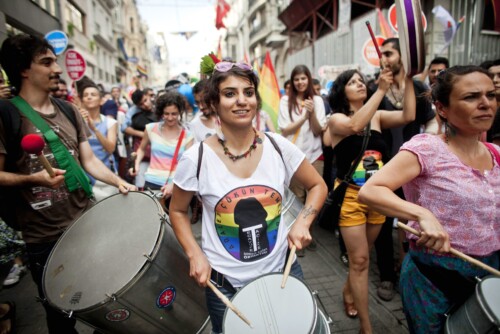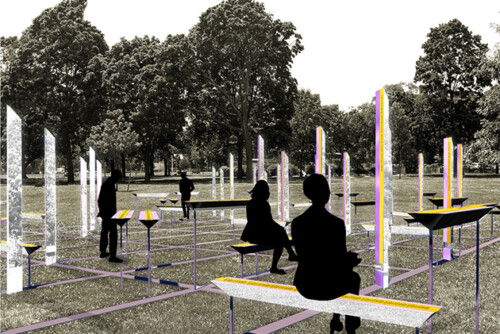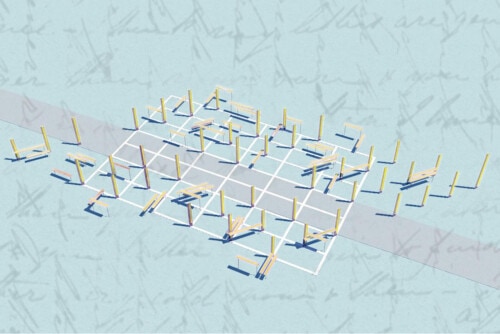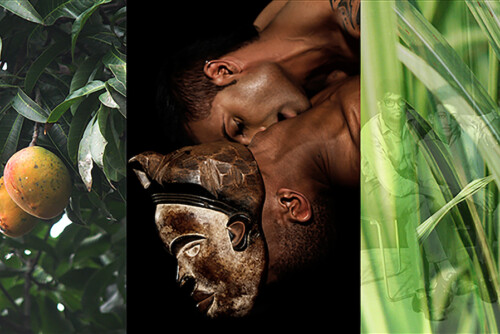Past and Present
Let us begin with the question of acquiring historical knowledge. Modern society suffers from an acute case of presentism. Presentism may be defined as the illogical assumption that (a) only the present matters because the past is dead and gone, and (b) the present is always more enlightened than the past. When I speak in India about my research on same-sex love in the past, I am occasionally asked what the point is of conducting such research – am I trying to glorify the past, and in any case, how is the remote past relevant today? My answer is that, first, knowing the past gives us hope because some past societies turn out to have been more intelligent in their understanding of sexuality than many societies are today. When I teach Sappho to my students I point out that never again would it be possible for a woman to express same-sex desire so freely without any sign of shame, defiance or protest.
Second, knowing the past assures us that no situation is entirely new; every situation is a mix of new and old. Take globalization. The present wave of globalization is speedier and more comprehensive than past waves, but it is not unique. There have been many waves of globalization, from the Silk Road, Alexander’s conquests and the Roman Empire in antiquity, to many incarnations of the Islamicate during the middle ages, to European colonialism from the Renaissance onwards. Each wave resulted in the circulation and transmutation of ideas, including ideas of same-sex union, for example, second-century Roman emperor Hadrian deified and set up statues of his lover, Antinous, who died young, in far-flung parts of the Roman empire, across Europe and the Near East, thus transmitting the idea far and wide that same-sex union was worthy of public celebration.
Similarly, the Persian ghazal, with its convention of gendering both lover and beloved male, traveled to India in the medieval period and to Europe in the eighteenth century, inspiring much homoerotic poetry. Likewise, the fourth-century Kamasutra, with its relatively non-judgmental depiction of male-male sex, traveled to West Asia in the medieval period, and to Europe somewhat later.
In our book Same-Sex Love in India, Saleem Kidwai and I trace how modern homophobia was imported from Europe (which had a long history of citing the Bible to torture and execute homosexually inclined people) into India, where, as far as we know, no one had ever been executed for homosexual behavior until 1588 when the Portuguese rulers in Goa burnt a 15-year-old boy for sodomy. The clearest manifestation of this homophobia was the anti-sodomy law introduced into the Indian Penal Code in 1861.
The ancient law book, Manusmriti, is sometimes quoted out of context to suggest that homosexually inclined people were severely punished. In fact, the Manusmriti prescribes a bath for men who have sex with each other (and for people who have sex in the daytime or in water or in a cart pulled by a cow). It prescribes a very small fine for non-virgin women who have sex with each other (much smaller than for many heterosexual offences); manual defloration of a virgin incurs a severe penalty (two fingers being cut off), which is the same whether this defloration is performed by a man or a woman. Much more severe punishments are prescribed for certain kinds of adultery and rape.1
Modern homophobia triumphed in India because most Western-educated Indian nationalists and social reformers, both Hindu and Muslim, both left-wing and right-wing, embraced the Puritan mores of the British. Numerous scholars have traced and analyzed the process whereby the British defeat of the 1857 rebellion, followed by vicious reprisals that demolished large parts of flourishing and prosperous cities like Lucknow and Delhi, killing and displacing thousands, resulted in many educated Indians trying to remake themselves simultaneously in the image of the conquerors and in that of an imagined purity drawn from remote pasts.2 Accepting the knowledge systems, values and skills of the new regime was required for economic and social success but it necessitated erasing or concealing much of one’s own cultural inheritance.3
The completeness of the transformation with regard to same-sex desire can be seen by comparing literature on this subject produced in north India in the early nineteenth century with literature produced in the early twentieth century. Here’s a playful Urdu poem written by the famous male Muslim poet Insha Allah Khan Insha (1756-1817), translated by me:
Your cheek is made for kisses
Why shouldn’t I ask for kisses?
As soon as I put my mouth on your lips
The kiss left a red mark there
Locks falling over that face say,
“We’ve woven a net of kisses”
In the morning the cheeks were blue,
Caused by last night’s thought of kisses …
Jān nikle hai O miyāṅ de ḍāl
Āj v‘ada na tāl bose kā
O sir, I’m dying, do give it to me,
Today, act on your promise of a kiss …
That the poem is addressed to a male is indicated not just by the last couplet here quoted but also by the one that refers to the cheeks as blue with facial hair. This poet, like most of his contemporaries in the pre-colonial cosmopolitan city of Lucknow in north India, wrote openly about love and desire, male-female, male-male and female-female. Insha’s contemporary in England, Lord Byron (1788-1824), despite his wealth and status, had to change pronouns in his love poems to men, in order to publish them.
When the British crushed the Indian revolt of 1857 they seriously damaged the urban cultures of Lucknow and Delhi along with their sexual arrangements. By the end of the nineteenth century, this type of playful, erotic poetry by major poets like Insha and his contemporaries had come to be considered obscene by Indians educated in British-dominated schools and colleges.4
The extent of the change can be seen in the first public debate on homosexuality in modern India. In 1924, nationalist writer Pandey Bechan Sharma, pen-name Ugra (Extreme) wrote a story in Hindi, called Chocolate, about a man who falls in love with another man and defends his predilection by citing earlier poets like Mir Taqi Mir and Ghalib, and also Socrates, Shakespeare and Wilde. The protagonist is disgraced and has to flee the city. Ugra claimed that he wrote the story to expose the vice of homosexuality, which, he said, pervaded all social strata. Warned not to write any more on this subject, he wrote eight more stories and published them in 1927 under the title “Chocolate.” “Chocolate”, Ugra said, was a slang term for a beautiful male youth and men who desired such youths were called chocolate-lovers. The book sold out within a week and went into a second edition.
A firestorm of protest broke out in the Hindi literary world (simultaneous with the similar firestorm in England over The Well of Loneliness in 1928), in which everyone who was anyone, including Gandhi, participated. Accused of titillating readers and making homosexuality appear attractive, Ugra gave up writing fiction for a while. This controversy had been forgotten until the 1990s, when Ashok Row Kavi, founder of India’s first gay magazine, Bombay Dost, told me that an elderly gay man had told him about Ugra’s book, and said that his circle of gay men had been delighted with the publication, because even though it could be read as homophobic, it was the first depiction of urban gay men in the modern world. That is how I heard about the book, which I later translated.
Thus, in the same region where Insha and his fellow-poets openly celebrated same-sex desire, the topic had for the first time become unspeakable. Lucknow became a symbol of this now-denigrated desire; one of Ugra’s stories about male-male desire is set in Lucknow and is ironically titled “Hum Fida-e Lakhnau” (I am in Love with Lucknow), a quotation from a poem by a Lucknow poet. A homophobia that was marginalized and ineffective in pre-colonial Indian society thus became dominant, especially among the educated classes, and today has been institutionalized in all branches of government, in educational institutions, and in organized religion.
Homophobia in India today is almost entirely articulated in outdated terms imported from the West, but this importation is generally not acknowledged. Ironically, homophobes often claim that homosexuality itself is an import from the West. In the 1970s and 1980s both rightwing and leftwing politicians in India made this claim. Today, the non-party left has largely rejected this view, leftwing political parties are slowly moving in that direction (recently, the Communist Party of India (Marxist) finally endorsed LGBT rights), and the Hindu right is divided on the issue. BJP Home Minister Rajnath Singh endorsed the Supreme Court judgment, stating that homosexuality is unnatural but several others, including Finance Minister Arun Jaitley, BJP member of parliament Kirron Kher, have stated that they favor decriminalization of homosexuality. Swarajya, a magazine which defines itself as representing India’s “New Right,” has carried several articles (cited later) supporting decriminalization.
When the Supreme Court reinstated the anti-sodomy law in December 2013, the judgment did not give any reason for this reinstatement except to say that the law is not unconstitutional. The judges did not cite religion, culture, family or morality as reasons for upholding the law. But supporters of the law, who included a range of rightwing Hindu, Muslim, Christian and secular groups and individuals, assumed that their arguments in this regard had been validated.
Two Hindu gurus reacted immediately. One of them, Sri Sri Ravi Shankar, a major guru and founder of the Art of Living, which has millions of followers worldwide, sent out three tweets in quick succession: 1. “Homosexuality has never been considered a crime in Hindu culture. In fact, Lord Ayyappa was born of Hari-Hara (Vishnu & Shiva).” 2. “Homosexuality – not a crime in any Smriti. Everyone has male & female elements. According to their dominance, tendencies show up & may change.” 3. “Nobody should face discrimination because of their sexual preferences. To be branded a criminal for this is absurd.”
Noteworthy here is the way this modern guru in his first two tweets draws on ancient scriptures as well as medieval devotion in order to make a statement in his third tweet. The story of Lord Ayyappa develops in the first millennium AD in south India and is told in several Puranas (scriptures that recount the story cycles of Gods and Goddesses). The story arises from the ancient narrative of how Vishnu (Hari), the preserver God, took a female form, Mohini. Shiva (Hara) got attracted to Mohini who became pregnant by him and produced Ayyappa, also known as Hari-Hara. Ayyappa is a bachelor God, worshipped by millions today.5
Sri Sri’s second tweet refers to the fact that in Hindu philosophy, gender, like all other temporal attributes, is a product of former lifetimes, and is not fixed but flexible since it may change from one lifetime to the next, and may also change within one lifetime, as stories like that of Sikhandin in the epic Mahabharata attest. Just as every God and Goddess is seen as simultaneously male, female and neuter, so too all living beings are viewed as a mix of male, female and neuter. At different ages, in different contexts or moods, and in different phases of life, the dominance and expression of these elements shifts.
Thus Sri Sri’s modern prescription, “Nobody should face discrimination because of their sexual preferences” is rooted in well-established and widely known Hindu concepts of gender and sexuality.6
Another Hindu guru, Baba Ramdev, who has not been initiated into any spiritual order but has acquired immense popularity in India through his daily TV show teaching yoga exercises, immediately declared to the press that homosexuality is aprakritik (unnatural), is a disease, is being promoted by the West, and is breaking the family system in India just as it has broken it in the West.
Anyone may make any claim on behalf of a religion and if the claim is accepted, it may become part of the religion as practiced today. However, it is important for historians of religion to examine whether these claims arise from a scriptural text, a devotional tradition or merely from modern prejudices unconnected to any religious practice.
Baba Ramdev’s word “aprakritik” (unnatural) is not found in any Hindu scripture in connection with same-sex sexuality. First-century medical texts frame certain genders and sexual behaviors as medical problems occurring in nature.7 The Kamasutra refers to men who desire men as tritiya prakriti (third nature). The notion of anything being unnatural is incompatible with the Hindu philosophical idea of Nature. Prakriti or Nature in Hindu philosophy is the universal principle of action and energy, of matter in motion. It is the counterpart of Spirit. Everything that exists is part of nature, and is animated by spirit, so nothing can be called unnatural. The many forms (human, animal, rock, river and so on) taken by Hindu Gods and Goddesses express the Hindu doctrine that everything that exists is a manifestation of the divine.
The word aprakritik is a modern translation of the English word “unnatural.” In relation to gender and sexuality, this word derives from St Paul, in the Book of Romans, who refers to women having sex in a way that is “against nature” (King James Version, 1611). He then refers to men leaving “the natural use of the woman” and having sex with each other. This idea was picked up by St Augustine (354-430 AD), who viewed all sex as sinful, and considered same-sex sex the worst because it is “against nature.”
Baba Ramdev’s idea that homosexuality is breaking the family system is easily recognizable as borrowed from right-wing Christian evangelists. No such statement is found in any Hindu text, and major twentieth-century Hindu teachers have made statements to the contrary. For instance, Swami Chinmayananda, founder of the Chinmaya Mission, when asked his opinion of homosexuality, replied, “There are many branches on the tree of life.” The image of the tree, one central to Hindu scriptures, such as the Upanishads, indicates rootedness in nature.
Most modern Hindus, in accordance with ancient and medieval texts, explain all spontaneous attractions and aversions as manifestations of attachments from former births. Several priests and teachers, as well as laypeople, understand desire, including same-sex desire, in this way. In her 1977 book, The World of Homosexuals, mathematician Shakuntala Devi recorded an interview with Srinivasa Raghavachariar, Sanskrit scholar and priest of the major Vaishnava temple at Srirangam in South India. Sri Raghavachariar, himself married and father of thirteen children, said that same-sex lovers must have been cross-sex lovers in a former life. The sex may change but the soul remains the same in subsequent incarnations, hence the power of love impels these souls to seek one another. He also explained homosexuality as part of Nature’s design, and heterosexual procreation as creating unnatural imbalances: “Homosexuality is also a design of Nature. Earth is overpopulated by the human species and the Earth Mother–Bhooma Devi–is no longer able to carry the burden. So this is one of Mother Nature’s way [sic] of combating the population explosion. Nature will not allow any species to dominate completely. . . . It’s only man who has acquired the ability to prolong his life span. . . . the sly human is exterminating vitally important insect, plant, and even mammalian life in order to make life for himself more luxurious. This, of course, you understand, creates an unnatural imbalance in the life pattern. . . . There’s also mankind’s pressing and overriding desire to reach out to other planets. These are all Mother Earth’s plans to relieve herself of the burden of the mass of humanity. All we can do is to sit back and wonder at the divine tricks of the Almighty!”8
Sri Sri’s reference to the idea that all of us are a mix of male and female is also connected to the idea common to several religions that the spirit is neither male nor female. In 2002, I talked to a Shaiva priest from India who conducted the wedding of two Tamil Brahman women in Seattle. He told me that when the women requested him to officiate at their wedding he thought about it and, although he realized that other priests in his lineage might disagree with him, he concluded, on the basis of Hindu scriptures, that, “Marriage is a union of spirits, and the spirit is not male or female.”
This formulation is amazingly close to that in a remark made by a village schoolteacher named Sushila Bhawasar who happened to be the neighbor of Leela and Urmila, two policewomen who married in 1987 in central India; this was the first reported case of such a wedding, and was followed by many others over the decades. When questioned by a journalist, Bhawasar responded: “After all, what is marriage? It is a wedding of two souls. Where in the scriptures is it said that it has to be between a man and a woman?”9
The irony of Baba Ramdev’s remarks lies in the fact that he simultaneously declares homosexuality a Western import and denounces it as unnatural, the latter a homophobic formulation that he imagines to be Hindu but that is in fact derived from the West.
- For more details on this and other law books, see Ruth Vanita and Saleem Kidwai, Same-Sex Love in India (New York: Palgrave-Macmillan, 2000), 28-31. [↩]
- On Lucknow as a center of trade and urban sophistication, see C.A. Bayly, Rulers, Townsmen and Bazaars: North Indian Society in the Age of British Expansion 1770-1870 (Cambridge: Cambridge UP, 1983). On its violent remaking after 1857, see M.H. Fisher, A Clash of Cultures: Awadh, the British, and the Mughals (Riverdale, MD: Riverdale, 1987), and Veena Talwar Oldenburg, The Making of Colonial Lucknow 1856-1877 (1984), in The Lucknow Omnibus (New Delhi: Oxford University Press, 2001). On British disdain for the rulers of Lucknow and their cultures, see Ruth Vanita, “India,” in The Fin-de-Siecle World ed. Michael Saler (Routledge, 2014), 283-99. For a similar process in Delhi, see William Dalrymple, The Last Mughal (London: Bloomsbury, 2006). [↩]
- See Ashis Nandy, The Intimate Enemy: Loss and Recovery of Self Under Colonialism (New Delhi: Oxford University Press, 1983); Frances W. Pritchett, Nets of Awareness (Karachi: Oxford University Press, 1995), 25-45; C.M. Naim and Carla Petievich, “Urdu in Lucknow/Lucknow in Urdu,” Lucknow: Memories of a City ed. Violette Graff (New Delhi: Oxford University Press, 1997). For an example of this remaking, see Frances Pritchett’s Introduction to her translation of Muhammad Husain Azad’s epoch-making history of Urdu literature, in which he both laments and denigrates the Urdu canon he loved: Frances W. Pritchett, translated, Ab-e Hayat: Shaping the Canon of Urdu Poetry (New Delhi: Oxford University Press, 2001). [↩]
- For more on this type of Urdu poetry and literary culture in pre-colonial Lucknow, see Ruth Vanita, Gender, Sex and the City: Urdu Rekhti Poetry in India, 1780-1870 (New York: Palgrave-Macmillan, 2012). [↩]
- For translation and analysis of one version of this story, see Same-Sex Love in India, 94-99. [↩]
- For more extended analysis, see Arvind Sharma, “Homosexuality and Hinduism,” in Arlene Swidler, Homosexuality in World Religions (Valley Forge, PA: Trinity Press, 1993); Ruth Vanita, “Hinduism and Sexuality,” in Brill’s Encyclopedia of Hinduism (Brill, Leiden, The Netherlands, 2012), Vol. 4: 740-53. [↩]
- See Michael Sweet and Leonard Zwilling, “The First Medicalization: The Taxonomy and Etiology of Queers in Classical Indian Medicine,” Journal of the History of Sexuality 3:4 (1993): 590-607. [↩]
- Shakuntala Devi, The World of Homosexuals (Delhi: Vikas, 1977), 146-47. [↩]
- Chinu Panchal, “ ‘Wedded’ women cops to challenge sack,” Times of India, February 23, 1988. [↩]




